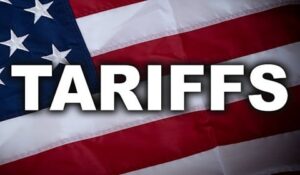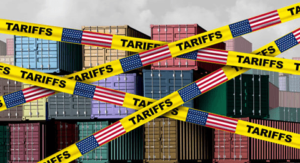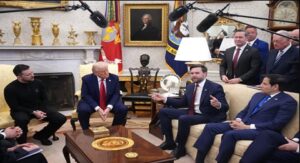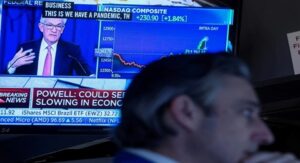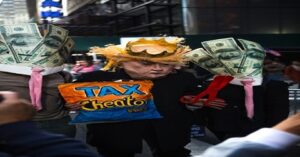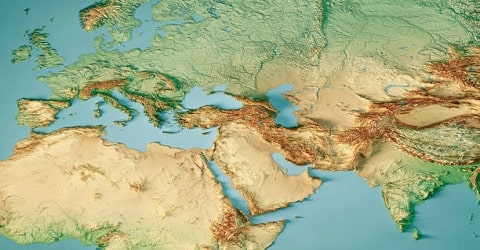
Geopolitics of Economic Development in the Middle East
Economic development in the Middle East is at a pivotal juncture, with the region becoming a focal point for global economic competition. Initiatives like China’s Belt and Road Initiative (BRI) and the India–Middle East–Europe Economic Corridor (IMEC) aim to forge new economic connections across borders. However, these projects face significant challenges, including geopolitical tensions, border disputes, and political instability.
Despite aspirations for regional integration, deep-rooted rivalries and complexities persist, hindering the realization of transcontinental economic corridors. To navigate these obstacles, diplomatic engagement and inclusive planning are essential, ensuring that economic development initiatives contribute positively to regional stability and prosperity.
Economic Development in the Middle East
The rise of economic corridor projects like China’s Belt and Road Initiative (BRI) and the India–Middle East–Europe Economic Corridor (IMEC) have sparked discussions about fostering economic integration across regions, particularly in Asia and Europe, and have significant implications for economic development in the Middle East.
However, they intersect with complex geopolitical realities, especially in the Middle East, where lingering border disputes and regional tensions present challenges. Despite their potential to enhance connectivity, these projects may also exacerbate geopolitical competition, particularly between the United States and China, and face obstacles like differing legal systems and political instability in the Middle East.
Here, we’ll delve into how these conflicts frequently emerge amidst regional instability, an issue that economic corridors are unlikely to alter significantly.
Read More: Political Stability: A Way Of Sustainable Development
Table of Contents
1. Dueling Visions
The Belt and Road Initiative (BRI), launched by China’s President Xi Jinping in 2013, aims to create a global network of infrastructure and economic collaborations. In contrast, the Infrastructure for the Middle East and Connectivity (IMEC), stemming from the 2023 G20 Summit, is a U.S.-led endeavor focused on bolstering economic ties across the Middle East, South Asia, and Europe.
IMEC specifically targets economic development in the Middle East while also fostering connectivity with neighboring regions. Both initiatives represent ambitious efforts to foster international connectivity and stimulate economic growth through infrastructure development and partnership building on a transcontinental scale.
Read More: Red Sea Crisis: A New Threat to Global Inflation and Supply Chains
2. China’s Reach
The Belt and Road Initiative (BRI) has propelled China’s global influence, boasting investments exceeding $1 trillion. Its footprint spans Asia, Africa, and extends to the Middle East, notably reshaping economic dynamics in nations like Egypt, Iran, and the UAE. Through extensive infrastructure projects and energy ventures, China has left an indelible mark on these regions, heralding significant transformations.
The BRI’s impact reverberates across diverse sectors, fostering connectivity, trade, and economic growth, solidifying China’s position as a key player in the global arena. Furthermore, the BRI has played a crucial role in driving economic development in the Middle East, opening up new avenues for investment and cooperation in the region.
3. Strategic Reconciliation
China’s involvement in mediating the Saudi-Iranian reconciliation highlights its strategic vision to stabilize the region, particularly to facilitate Belt and Road Initiative (BRI) projects and promote economic development in the Middle East. Through fostering collaboration among influential stakeholders, China seeks to bolster stability and security, crucial for the success of its economic ventures.
Mediation not only aims at thawing tensions but also at securing essential infrastructure and transportation channels. By doing so, China intends to fortify the foundation of its economic initiatives, ensuring smoother implementation and long-term sustainability in the region.
4. U.S. Counterbalance
The IMEC, spearheaded by the United States and allies, strategically counters China’s expanding influence. Linking India to Europe through the Middle East, it presents an alternative to China’s Belt and Road Initiative (BRI), notably in areas of historical U.S. sway such as the Gulf region. This initiative aims to bolster economic ties, enhance infrastructure development, and strengthen geopolitical alliances, including economic development in the Middle East.
The IMEC seeks to shape regional dynamics and offer nations in the Middle East and beyond by fostering connectivity across continents an alternative path for economic development and strategic partnerships, thereby diversifying global influence and reducing dependency on Chinese initiatives.
5. Complex Challenges
Economic corridor initiatives encounter significant hurdles, including political volatility, border conflicts, and conflicting agendas among involved countries. The absence of pivotal participants like Türkiye from the Integrated Middle East Corridor (IMEC) underscores the intricate nature of regional relations. Economic development in the Middle East adds another layer of complexity to these challenges, as differing economic priorities and strategies among nations may further complicate collaboration efforts.
All obstacles hinder seamless cooperation and economic integration, impeding the realization of the projects’ potential benefits. Overcoming these challenges demands diplomatic finesse and strategic collaboration to navigate the divergent interests and historical tensions that characterize the region. Achieving inclusive participation and addressing underlying geopolitical concerns are essential steps toward fostering stability and unlocking the economic growth envisioned by corridor initiatives.
6. Regional Instability
Persistent conflicts, notably the Iran-Israel rivalry and the Saudi-Iranian tension, present formidable hurdles to economic progress and corridor initiatives, including economic development in the Middle East. These enduring disputes sow seeds of uncertainty, jeopardizing both trade pathways and investment ventures.
The specter of ongoing security threats looms large, casting shadows over the stability of vital trade routes and the realization of ambitious economic agendas. In this volatile landscape, the potential for escalation adds an additional layer of risk, underscoring the urgent need for diplomatic efforts and strategic measures to mitigate tensions and foster an environment conducive to sustainable development and regional cooperation.
Read More: Economic Challenges in the Middle East: 7 Key Geo-economics Stresses
7. Diplomatic Imperatives
Effective economic corridor development hinges on inclusive diplomacy and transparent collaboration, including economic development in the Middle East. Alleviating geopolitical tensions and rectifying regional inequalities are pivotal for nurturing an environment conducive to economic advancement.
Such corridors necessitate multilateral engagement, ensuring all stakeholders have a voice in decision-making processes. Transparent cooperation fosters trust and encourages participation, vital for sustained development. By addressing disparities and promoting harmonious relations, economic corridors can unlock vast potential, fostering mutual prosperity and stability across regions.
Bottom Line
In conclusion, while economic corridors hold promise for fostering regional integration and development, navigating the geopolitical terrain of the Middle East presents formidable challenges. Economic development in the Middle East is crucial to the success of corridor projects, as global powers vie for influence and economic dominance, the fate of these projects hinges on strategic diplomacy and concerted efforts to address underlying tensions.
